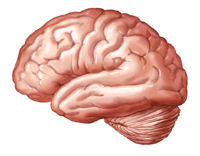Leadership style and neural networks – Part 3
Lean leadership and the two neural domains
By Karen Wilhelm
Note from Jeff: In recent months, I have been working to collaborate with a group of fellow Lean bloggers to enhance the Lean community. While we are still in the infancy of figuring out all the different ways this group can work together, we are experimenting with innovative ways to get our message out. One such idea is getting some peer review of our articles. I look forward to working more with Karen, Matt, and Chris in the future.
Toyota’s two pillars of management are respect for people and continuous improvement. Respect for people obviously calls on the DMN, the “default mode” neural network associated with emotion and relationships. Continuous improvement does not neglect the people factor, but it does require methodical data collection and analysis — TPN (task positive network) activities. We have seen in earlier posts in this series that good leaders can smoothly switch networks depending on the situation.

Your Brain on Lean
When the leader chooses the mode that resonates most with the one the team members’ are in, outcomes are better. The TPN mode is a good choice when helping people focus on standard work, production goals, data collection, and problem analysis. Creative situations where leaders are teaching, or team members are developing improvement ideas, require more DMN time.
Policy deployment and problem solving are two other lean processes that involve contrasting brain activities. The hard analysis that shows up on an A3 single-page problem analysis tool calls on the task network. The people network applies to both policy deployment and problem solving, in catchball or socializing processes, where people at different levels and in different functional departments consider, make suggestions, and ultimately agree.
Not all leaders — or team members — are good at understanding and switching between modes. There are some ways leaders can choose to get better at switching however. They can exploit the use of leader standard work to include deliberate talking and listening pauses. In manufacturing, where many leaders come from engineering or production backgrounds, they can set aside time each day to coach (DMN) a supervisor or workgroup — and that fits with the “coaching kata” concept Mike Rother has learned from Toyota.
See Part 1 of the series on Karen’s Lean Reflections blog, and Part 2 on Matt Wrye’s Beyond Lean blog.
Peer Comments…
How can understanding your neural networks help you be a better leader? Here’s what some lean leaders say:
Matt Wrye: This research has helped me learn to be more purposeful in understanding what type of leadership I should be using in different situations. I have used the suggestion of incorporating it into my standardized work for the day.
Having a better understanding of ourselves and why we may do things helps us become better leaders for any situation.
Chris Paulsen: This is exciting news! Many leaders have not really achieved the right balance between the two domains so there are many who can become better leaders just by practicing the use of both. I know that I have seen leaders strike a better balance when they have made the effort. This research shows that while we have a natural bent, we can develop the skills needed to be great leaders.
Guest Author Bio: Karen Wilhelm is a business blogger and freelance writer covering lean as applied in many domains. She has been blogging at Lean Reflections (www.leanreflect.com) eight years and has more than 20 years experience in manufacturing and management.




0 Comments